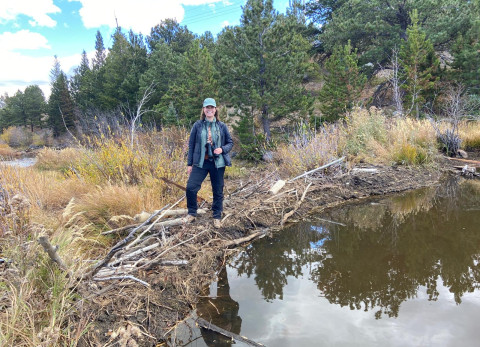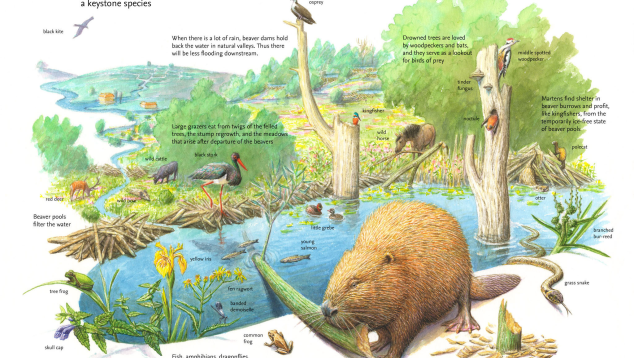Beavers in the Netherlands: a blessing or a burden?

Beavers in the Netherlands: a blessing or a burden?
PhD in progressBeavers were reintroduced to the Netherlands in 1988 and the beaver population has grown enormously since then. About six thousand beavers now live in the Netherlands. In the wild, beavers can have very positive effects on their environment by changing it, but is this also true in human-regulated areas?
As natural areas - the beavers' preferred habitat - reach their carrying capacity, beavers increasingly settle in agricultural areas and even in cities. Such densely populated areas, which are heavily managed by humans, influence the beavers' behaviour. For instance, beavers can easily dig burrows in the steep banks of human-diverted streams. Beavers are also known for their beaver dams, but in the Netherlands this is not very common at all. There are nowhere near as many dams as beavers in the Netherlands. Beavers build a dam to raise the water level in a stream to such an extent that the entrance to their lodge is submerged. This keeps them safe from predators on land. But this is often not necessary in the Netherlands. Weirs, sluices, pumping stations, culverts and dikes control the water level to meet the demands of human interests such as agriculture. Moreover, many streams have been straightened, widened and deepened to allow the large amount of water in our delta to be drained as well and quickly as possible. As a result, the water level in many of our watercourses is already deep enough for a safe underwater entrance to the lodge, eliminating the need for beavers to build beaver dams.
'Ecosystem engineers'
Beavers are known in nature as ‘ecosystem engineers’. These are species that can adapt their environment to their own needs. By building dams, they create so-called beaver ponds, in which they but also many other species can find their food. With this, beavers play an important role in the food web and are considered a keystone species because their influence is necessary for the ecosystem to function. Beavers bring all kinds of benefits to nature, but they also benefit humans. For example, beavers help improve water quality, store CO2 in their beaver ponds, and adapt to a changing climate as their dams perform an important function during times of (extreme) drought or rainfall.
But are those engineers welcome?
In a densely populated, low-lying and water-rich landscape like the Netherlands, the beaver's digging, gnawing and building is not always wanted. Digging in particular presents a major challenge in the Netherlands. For instance, there are many beavers in the floodplains along our major rivers. Once in a while the water level is high, which fills up the floodplains and also floods the beavers' territory. At that time, beavers look for a temporary dry shelter, and dig into our dikes, right when we as humans are extremely dependent on the safety the dikes provide.
A sustainable human-beaver society
So living together with beavers in a country like the Netherlands is not easy. On the one hand, it would be nice if we could make the most of the beaver's benefits, but on the other hand, beavers also pose major challenges. During my PhD, I focus on both the ecological and the social side of this narrative. I am curious about the positive ecological effects of beavers in man-made nature. For example, in the Netherlands, where water quality is very poor, do beavers positively affect water quality? And what are the ecological effects of beavers when they are not building dams? I also look at the social effects of beavers. People are generally quite positive about beavers. How do involved parties, such as the water authorities, Rijkswaterstaat, ProRail and the Dutch Mammal Society view ‘problem beavers’? And how do local residents view having a beaver family in their neighbourhood?
With my research, I hope to better understand the ecological and societal role of beavers in man-made landscapes such as the Netherlands. By better mapping their effects, we can develop strategies for a sustainable coexistence in the future, where the habitats of both people and beavers are increasingly intertwined.


